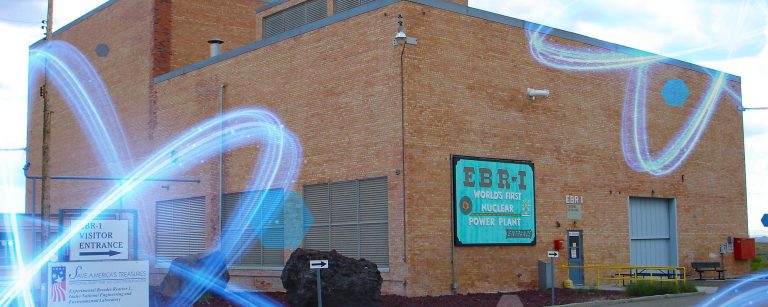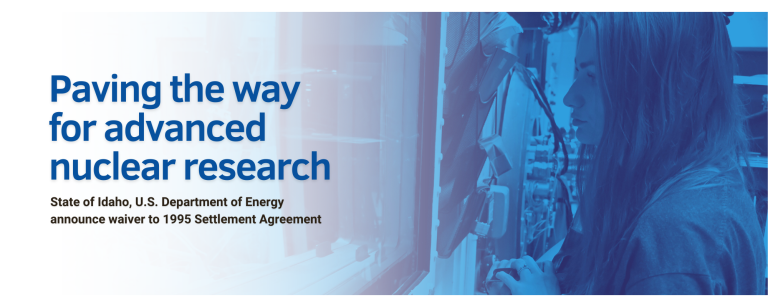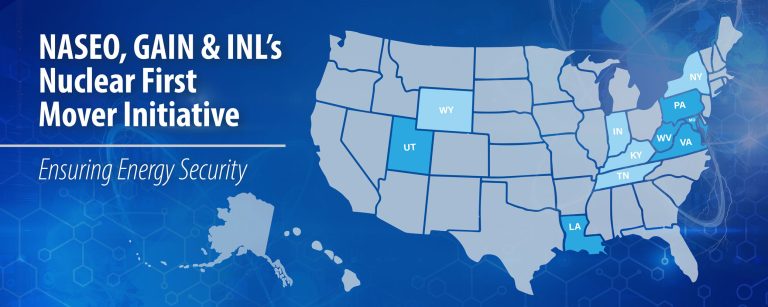College of Eastern Idaho (CEI) President Lori Barber looked out Aug. 28 to a crowd of state legislators, the mayors of Ammon and Idaho Falls, senior Idaho National Laboratory officials and others protected from the midday sun by a large awning. It was a fitting audience for what Barber called “a once-in-a-lifetime announcement.”
They were unveiling the Legacy Project at a new facility being constructed on the CEI campus. A partnership between the college, Frontier Credit Union and Battelle Energy Alliance (BEA), which manages and operates the Idaho National Laboratory for the federal government, pushed the project across the finish line. When it opens, the Battelle Energy Alliance Future Tech in Partnership with Frontier Credit Union building will feature:
- 88,000 square feet on two levels
- Collaborative classrooms
- Advanced laboratories
- A 4,000-square-foot convention center
- A secure operations center
It’s estimated that up to 1,000 students will take courses in a variety of science, technology, engineering and mathematics (STEM) fields, including cybersecurity, energy systems, nuclear technology, battery and solar technology, and more.
The Future Tech building, a roughly $50 million project that can be seen from Hitt Road, was funded through a combination of state money and private funds. On Aug. 21, BEA committed $4.5 million to the project, piggybacking an earlier $1 million donation for construction. Frontier committed $3.5 million. As part of the agreement, the building will contain the BEA Applied STEM Institute, which will act as the hub for STEM education efforts in the region. Frontier will establish a STEM-focused scholarship program.
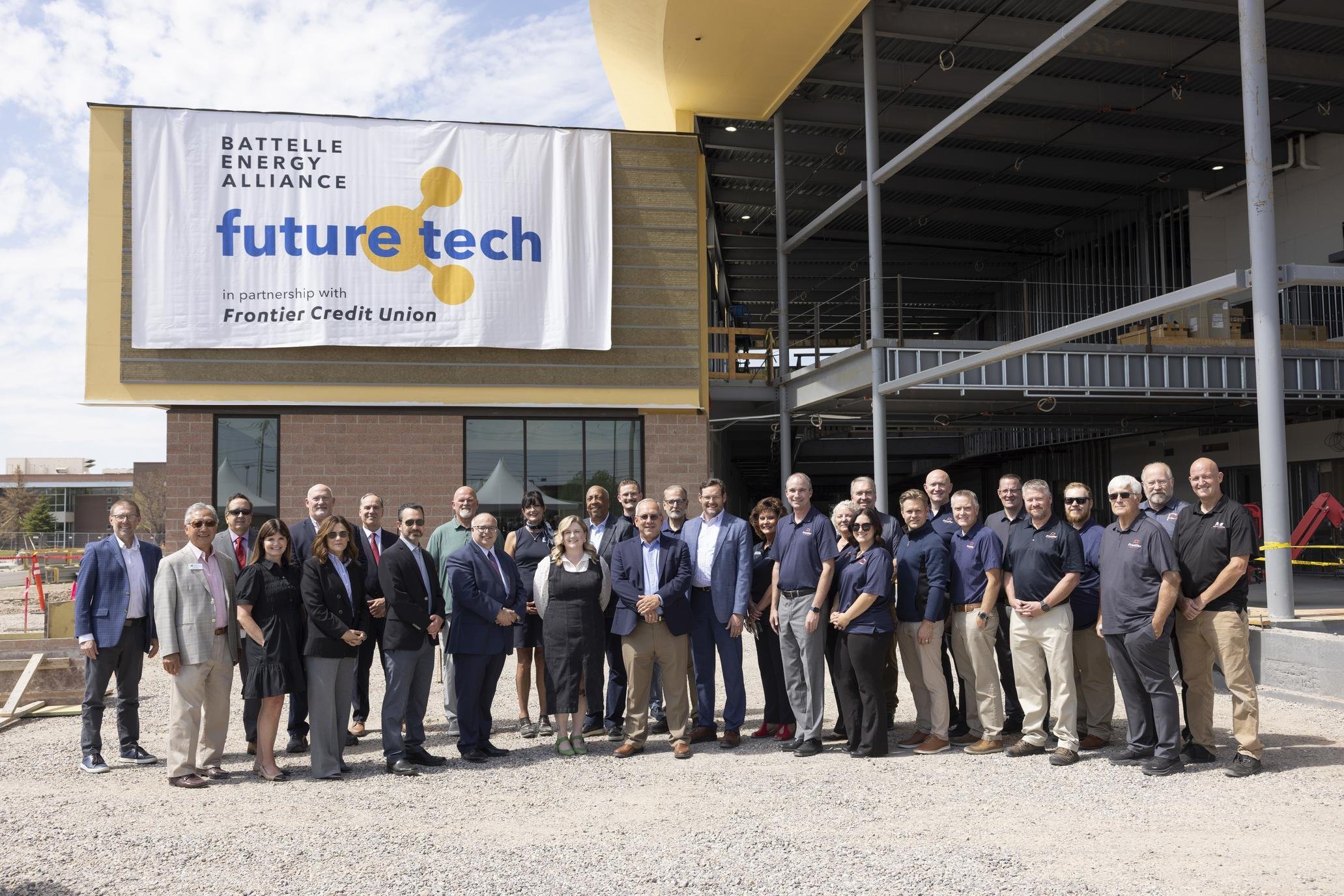
The new facility is scheduled to be available to students in the fall of 2026. Hope Morrow, INL’s manager of Workforce and Economic Development programs, said the Future Tech building and Applied STEM Institute will serve as a legacy for BEA and INL in the community. Morrow said the impact of these investments will set new paths for education in Idaho and increase the energy industry workforce development pipeline.
“CEI is a critical conduit to connect Idaho’s K-12 students to the energy industry,” Morrow said. “BEA’s investment in these foundational opportunities will pay dividends in our community.”
As co-chair of the Idaho Legislature’s budget-writing committee, Rep. Wendy Horman played a vital role in securing state funding for Future Tech. And like the other featured speakers during Thursday’s event, Horman used history to emphasize the importance of providing Idaho students the education and training they will need to succeed.
Horman spoke about her 20-year journey attempting to modernize education, dating back to her time on the Bonneville Joint School District #93 School Board. Some of those efforts fell short. Others, such as Future Tech, succeeded.
“In politics, you win some and lose some,” Horman said. “But today is a huge win for Idaho students.”
Juan Alvarez, Battelle’s executive vice president for laboratory operations, talked about the company’s long history of enabling scientific excellence, supporting education and commitment to its communities.
Over the last 20 years, BEA has helped expand STEM opportunities for students across Idaho, while working with the local community college to prepare students for careers in energy-related fields.
“This is an amazing community,” Alvarez said. “You’re going to benefit tremendously from this opportunity to develop our future talent.”
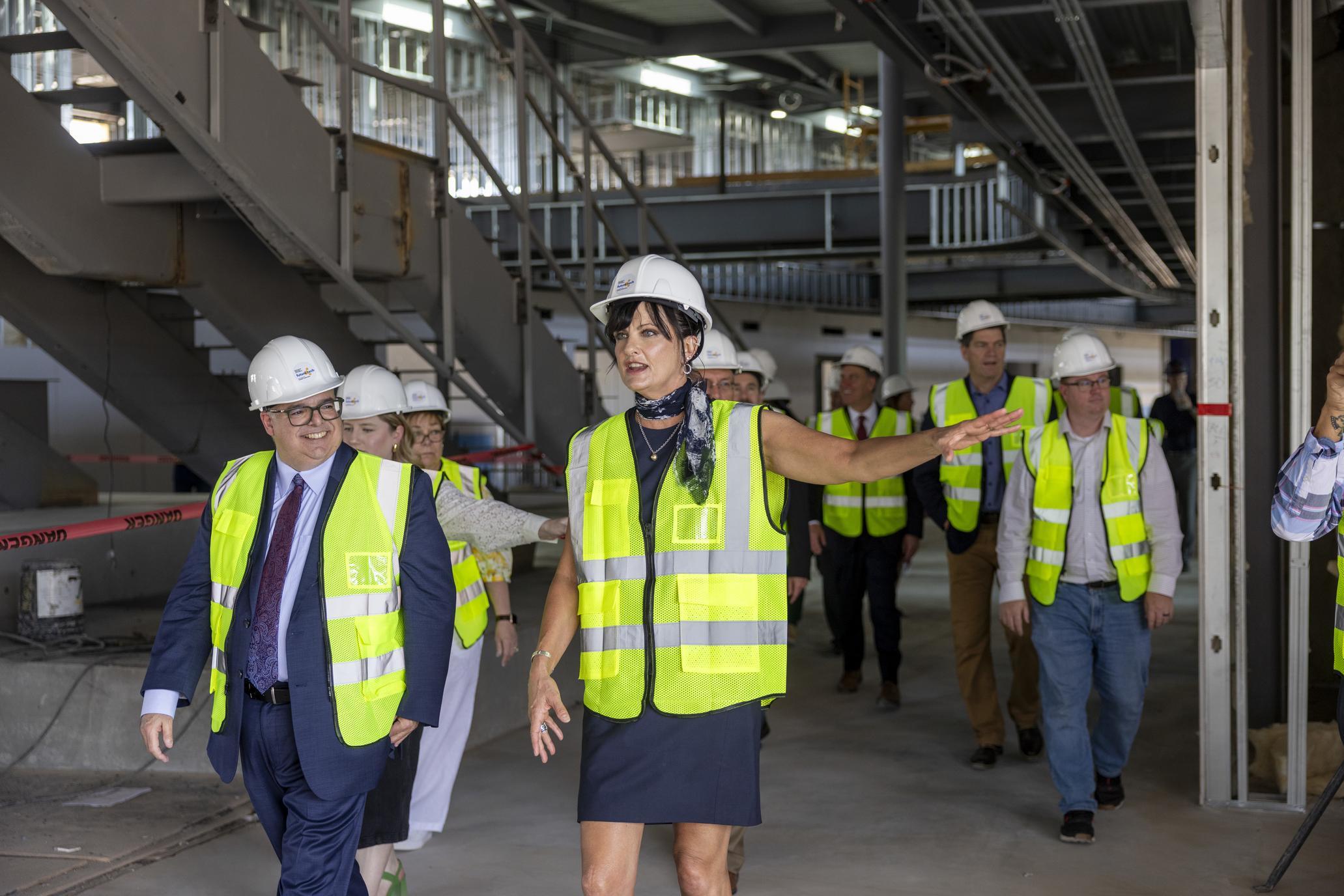
INL Director John Wagner spoke about the lab’s 76-year history of achievement and deep ties to eastern Idaho. Wagner emphasized that the work being conducted today at INL, including the impending startup of the first new reactor on the site in more than 50 years, is vital to the nation. Developing a workforce that can deliver the abundant and secure energy the nation needs to ensure economic prosperity and national security, Wagner said, is a primary focus for INL and its partners.
“That’s exactly what Future Tech is all about,” Wagner said.
Dan Thurman, CEO of Frontier Credit Union, spoke about the company’s deep ties to the region, dating back to 1935, and how many individuals and organizations came together to support the Legacy Project and Future Tech building.
“This spirit of coming together is exactly what makes Idaho special,” he said.
Barber, who became CEI president on Aug. 1, 2024, said this agreement and facility represent the best kind of coalition, people from academia, industry and all levels of government. This group identified a need, set goals and executed its plan. As a result, eastern Idaho’s students will have opportunities that would have been difficult to envision when Bonneville County voters created the community college eight years ago.
“This remarkable building is really proof of what happens when we all come together in a common cause,” Barber said. “It is the result of a partnership that will change lives for decades to come.”



